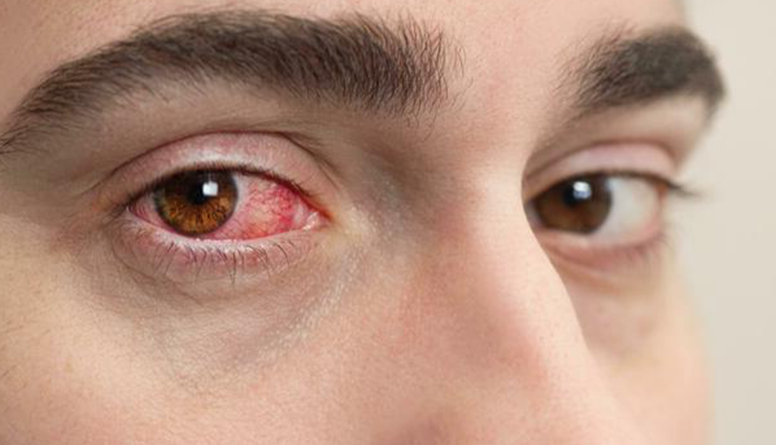Eye Flu Symptoms, Causes & Treatment- Effective Treatment and Prevention Strategies
Eye flu (conjunctivitis) or pink eye is a prevalent eye condition that can be caused by viral or bacterial infections. The most common symptoms are redness in the eye, itchiness or teary eye, swelling of the eyelid and burning sensation in the eye. This condition is usually not harmful and tends to resolve itself within a couple of weeks. It is highly transmissible and can easily spread from one person to another. So it is important to avoid any kind of direct contact with an infected person.
Eye Flu Symptoms:
The most common symptoms affected individuals experience are:
- Redness: Redness or bloodshot in the white part of the eye
- Itching: Creates the need to rub eyes
- Discharge: Watery or yellow and sticky discharge like mucus from the eyes
- Swollen eyelids: Affected individuals experience puffiness in the eyelids
- Sensitivity to light: Light may be uncomfortable for the eyes
Cure and Treatment of Eye Flu:
Treatment and cure of eye flu involves alleviating the symptoms. This is made possible through eye drops and eye flu medicines.
- Antiviral Medications: These medicines are ideal to consume when the cause of flu is herpes or simplex virus
- Cold compresses: Cold Compresses help reduce swelling and itchiness in the eyes
- Eye drops: This relieves dryness and irritation in the eye
- Cleansing: Cleaning the eye regularly is a crucial part throughout the course to not let the infection elevate. It is recommended to use a clean, damp cloth to gently clean the eye and remove any accumulated mucus or discharge.
What Causes Eye Flu?
The primary reasons behind eye flu are viral infections and spread through contact.
Here are some of the most common viruses that lead to eye flu infections:
- Adenovirus: This virus is one of the most common one which can also cause respiratory illness. Many times eye flu is a symptom of respiratory illness.
- Herpes Simplex Virus: Although rare, this virus may cause a recurrence of eye flu in individuals who have the virus dormant in their body
- Enterovirus: This virus is highly contagious and is often responsible for outbreaks in communities
- Varicella-Zoster Virus: This is the same virus that causes chickenpox, the reactivation of which can cause eye flu.
- Coronaviruses: Observed during the COVID-19 pandemic, eye flu may be a cause of coronavirus in some cases.
The most common cause of eye flu is transmission of the infection by getting in contact with an affected individual. This is possible through the following ways:
- Direct Contact: Touching your eyes with unwashed hands after contact with an infected person.
- Contaminated Surfaces: Using objects like handkerchiefs or door handles touched by someone contagious.
- Airborne Droplets: Coughs or sneezes can also carry infectious particles to your eyes.
Prevention:
One should follow these preventive measures to avoid eye flu or conjunctivitis :
- Keeping hands clean: Regularly wash your hands for at least 20 seconds
- Contact lenses: Avoid using contact lenses.
- Eye makeup: Avoid wearing any eye makeup.
- Individual and separate towels: Do not use shared towels or clothes
- Avoid rubbing eyes: Refrain the urge to rub your eye
In-Home Treatment and Remedies for Eye Flu
To speed up your recovery from eye flu, try the following:
- Cleansing: Cleaning the eye gently from time to time with a damp cloth can help speed up the recovery.
- Avoid touching eyes: This helps in the prevention of irritation in the eye. This also prevents the virus from spreading.
- Keep towels and handkerchiefs: Keep your separate items like towels and handkerchiefs with you. This will help you refrain from sharing towels and handkerchiefs.
Types of Conjunctivitis/ Eye Flu
Eye Flu is also known as conjunctivitis. The symptoms of eye flu depend on the type of virus. The most common types of conjunctivitis are mentioned below:
- Viral conjunctivitis: This is the most common type of eye flu which is caused by virus. It spreads very quickly and can also cause an outbreak.
- Allergic conjunctivitis: Eye flu, in this case, is caused by an allergic reaction to dust, pollen, or other irritants.
- Chemical conjunctivitis: Exposure to chemicals like chlorine, smoke, or household chemicals can also lead to conjunctivitis.
- Pink eye (conjunctivitis): This can be highly contagious and is usually caused by allergies, bacteria, and viruses.
- Dacryostenosis: This is caused due to blockage in the tear duct. Its symptoms may appear usual but it is advised to consult a doctor in this case.
- Giant papillary conjunctivitis: Allergies caused by contact lenses also contribute to the cause of conjunctivitis.
- Trachoma: The cause of trachoma is poor hygiene due to poverty. This can also lead to blindness if it is not treated.
- Irritant conjunctivitis: This conjunctivitis is caused by irritants around us like fumes.
- Bacterial conjunctivitis: This conjunctivitis is caused by bacteria and its symptoms include thick mucus from the eyes. This is usually treated with the help of antibiotics and ointment.
- Blepharitis: This is caused by inflammation of the eyelids. It displays symptoms like puffy eyelids and thick and yellowy mucus.
When to Consult a Doctor in Eye Flu?
It is recommended to consult a doctor immediately if you experience any of the following:
- Irresistible discomfort: Unbearable redness and pain in the eyes
- Worsening eyesight: Decline in eyesight or unclear vision
- Long-lasting Symptoms: Symptoms do not show improvement after one week
Closing Note
Learning about eye flu by observing your symptoms can help with early detection of the infection. Treatments and preventive measures should be considered by the affected individual to prevent the infection from spreading. Home remedies like cold compresses and avoiding touching the eyes can help relieve the symptoms. The infection spreads through either viruses or through direct contact with the infected person. This can be avoided by washing hands and maintaining hygiene regularly. Eye has various types depending on the type of environment around us. These types show slightly different symptoms in each type. Conjunctivitis usually heals itself after a week but the affected person should consult a doctor when symptoms worsen and do not show improvement even after a week.

















